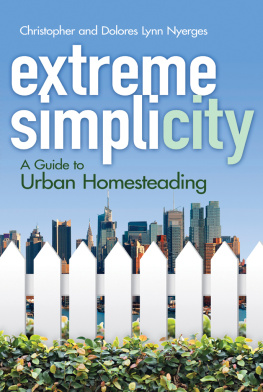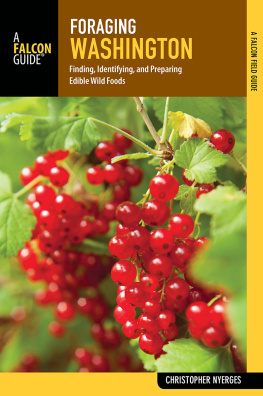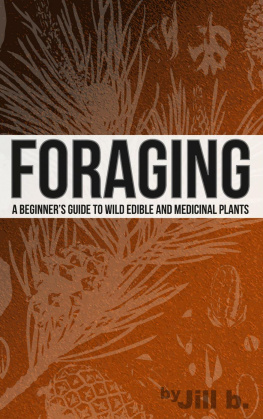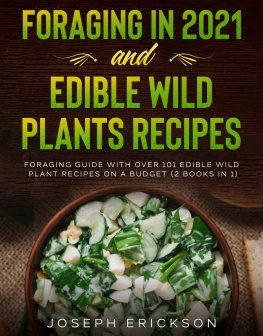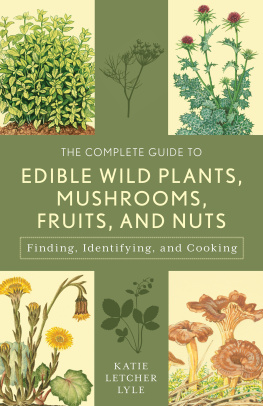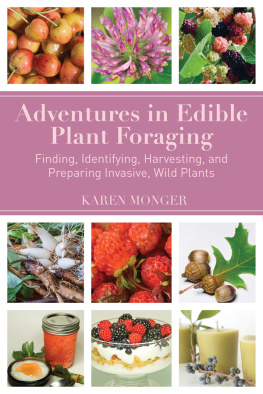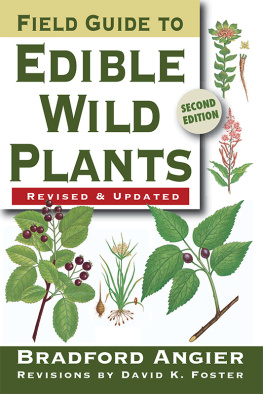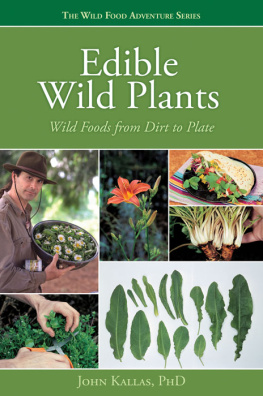ABOUT THE AUTHOR
Christopher Nyerges, cofounder of the School of Self-Reliance, has led wild-food walks for thousands of students since 1974. He has authored 10 books on wild foods, survival, and self-reliance, and thousands of newspaper and magazine articles. He continues to teach where he lives in Los Angeles County, California.
KNOW WHAT YOU CONSUME!
One of the most dangerous misconceptions is that simply because herbs, weeds, and plants are natural, they are completely safe and far better than any substance that comes from a commercial source. This erroneous thinking has caused sickness, hospitalization, and, on occasion, even death. Likewise, some of the distrust of refined medicine is, if one follows this line of thought, mistaken because there is still medicine that is extracted directly from plants.
There are edible herbs that can be consumed in large amounts, indefinitely, with no apparent effects. There are other herbs that, in very small amounts, cause predictable effects in or on the body. These herbs can be useful in the medical profession for counteracting undesirable physical conditions. There are also herbs that seem to have little or no effect in small amounts. They even appear to be beneficial, but large amounts have definite adverse effects. Other herbs are poisonous if even the smallest amount is consumed, but contain a single element that, if extracted and administered in minute amounts, creates beneficial effects in or on the body. These can be harnessed and used in carefully controlled situations by professional healers.
Due to the wide range of effects plants can have if consumed, foragers should always obey the inflexible rule: Never eat any plant until that specific plant has been positively identified as an edible species.
Fine. But what about foraging among the tea shelves at the health good store? Simply because an attractively boxed herb tea appears on the shelf is not enough reason for you to presume that you can eat or drink it unreservedly and in any amount you please. You had better ask the clerk, or better yet, do research in any of the excellent herbal reference books at the library. You had better know what reaction you should expect by drinking any given herb tea. Here are some cases of what happens to those who dont bother to find out before they begin guzzling their natural, organic herb tea.
On January 26, 1979, Beverly Dixon was strolling through a Madison, Wisconsin, shopping mall and, on impulse, purchased a package of dried powder of pokeweed. It came with instructions on how to brew it into tea. Pokeweed, a common weed in the United States, can be valuable medicinally if used with extreme caution, but it is definitely classified as a poisonous plant.
An hour and a half after Beverly drank the tea, she began to vomit and had severe cramps and pain. Her husband rushed her to the intensive care unit at University Hospital where her stomach was pumped. She was hospitalized 22 hours in all.
A 26-year-old Colorado woman drank a cup of burdock root tea (normally safe). But it was later discovered that the burdock was contaminated with another unidentified plant. She went into delirium after drinking the tea.
Also in Colorado, there have been four reported cases of women who drank pennyroyal oilone died (she drank 1 ounce of it), and the others became ill.
Another common error among budding herb enthusiasts is the mistaken belief that if a little is good, a lot must be great. This has led to abuse of such things as ginseng and garlic. A ginseng user who consumes large amounts of this expensive oriental root may experience high blood pressure, sleeplessness, nervousness, skin eruptions, and morning diarrhea. Overconsumption of raw garlic can burn the tissue of the mouth, esophagus, and stomach. Too much raw garlic can also cause digestive upsets and stomach ailments. Hallucinations have even been reported as an effect of overconsumption.
Carelessness is also a factor in many cases of herb poisoning. In Phoenix, Arizona, the parents of a two-month-old baby gave the baby an herb tea to relieve congestion. The baby died; the herb was poisonous. Who was at fault? As far as the baby was concerned, it didnt matter. The herbal tea that the parents purchased had been processed and packaged with a poisonous herb by mistake. Processed and packaged with a poisonous herb by mistake? How could such a thing happen? Though there are probably a few ways this could have occurred, here is one scenario to consider.
I once earned extra income as a wildcrafter. That means I collected medicinal herbs from the wild, cleaned and dried them, boxed them and sent them off to a middleman who then sold them to various companies that sold the herbs retail. Once when I was asked if I could get a particular herb, I told my buyer that it would not be economical for me to gather that herb because it required so much work to make sure it was 100 percent pure. (Everything I sent out was 100 percent pure.) He told me not to worry, that I could have as much as 15 percent adulterant in whatever I sent him. That was a bit of a shock to hear. Adulterant means other stuff that gets mixed in that is too much trouble to pick it out. That could mean sticks, leaves of other plants, cobwebs, whatever. I declined his offer. But if that represents any sort of an industry standard when the middlemen buy from collectors, that provides a strong clue as to why the baby died, and why I always prefer to grow or gather my own herbs than to buy them boxed at some herb or health food store.
In another case in Washington, an elderly couple had been recommended comfrey tea for their arthritis. They decided to pick their own. That is, of course, a great idea, since they would avoid any possibility of any adulterant in their herb tea, and it would be fresher. They picked an herb that looks remarkably similar to comfrey, but wasnt. They actually picked foxglove (an herb containing digitalis, which is used for reviving irregularly beating hearts). If eaten, foxglove is a dangerous poison. The woman died before the ambulance arrived, and the man died in the hospital. It was a great idea to pick their own, but what they didnt know killed them.
In some cases, the problem arises when one is seeking an herbal high, a narcotic or hallucinogen from the plant kingdom. The Poison Center in Los Angeles has treated many people there after they have consumed jimsonweed in hopes of a cheap high. Catnip, juniper, lobelia, and wormwood have also been thus abused.
Various cathartics such as senna, buckthorn, cascara sagrada, dock, and aloe can be readily purchased. Abuse of these herbs can cause severe abdominal cramps and profuse watery diarrhea.
Individuals allergic to ragweed have experienced severe reactions after drinking teas made from other members of the Sunflower familychamomile flowers, goldenrod, yarrow, and marigold.
Mistletoe leaves, now more commonly available at herb stores than in the past, contain a toxin that can cause effects similar to an injection of cobra venomwidening of the lumen of blood vessels, shock, and cardiac arrest.
The point here is not to cast a cloud of fear and suspicion over the herb kingdom. You simply need to be informed before you eat any new food or drink any new beverage. Overconfidence and misinformation have caused countless deaths. Practice moderation until you can properly determine how your body reacts to any new substance. Simply because an herb tea is on your grocers shelf doesnt mean that it is totally safe for you to ingest.
The fact that something is labeled as organic or natural (even though such labeling may be 100 percent honest) does not mean that it wont kill you. So what if the poison hemlock is organic? Its poisons will still kill you.



